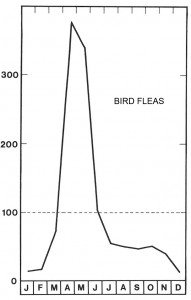Bird fleas can also invade the home directly from birds’ nests in the roof or in a chimney, or they can sit on laundry, which has hung to dry in the garden near a bird’s nest. Furthermore, a typical situation in which to get infested by the fleas in the spring is while gardening.
Nest boxes can contain hundreds of fleas. You get easily infested with the fleas while handling the boxes, especially if you take the boxes inside during the winter or in spring to clean and repair them. The kind of domestic crafts should always be done outdoors and during the winter.





